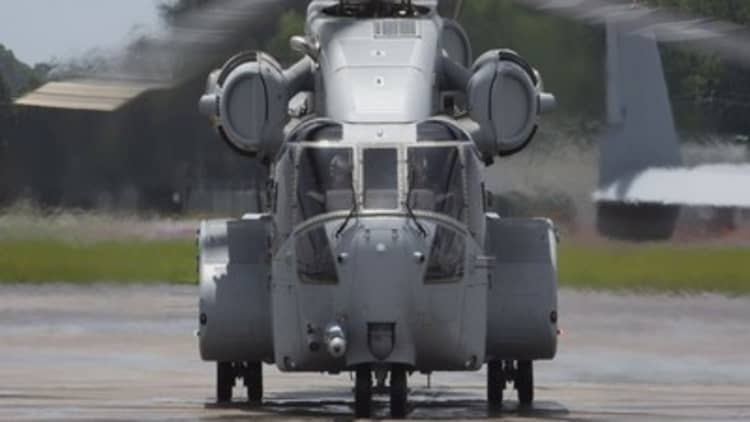
The most powerful helicopter ever fielded by the U.S. was just delivered to the Marine Corps.
The CH-53K King Stallion aircraft touched down at Marine Corps Air Station New River in Jacksonville, North Carolina on Wednesday.
The helicopter, which has been in development since 2006, will replace the Marine Corps' nearly 40-year-old CH-53E Super Stallion fleet.
Wednesday's delivery is the first of an expected 200 aircraft from Sikorsky, a unit of Lockheed Martin. The CH-53K is not only considered the most powerful but also one of the more expensive with a recurring flyaway cost of $87 million.
The new heavy-lift chopper can carry triple the weight of its predecessor at a colossal 27,000 pounds. With that type of lift capacity, the CH-53K can transport up to four Humvees more than 100 miles.
"I am very proud of the work accomplished to deliver the most powerful helicopter ever designed into the hands of our Marines," said Lt. Gen. Steven Rudder, deputy commandant for aviation, in a statement.
Rudder noted that the Marine Corps will continue testing the chopper and hopes to declare it ready for deployment by the end of 2019.
The second CH-53K helicopter is slated for delivery to the Marine Corps early next year.



